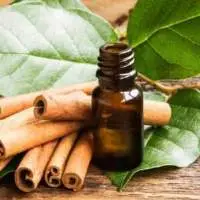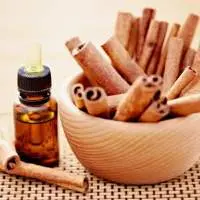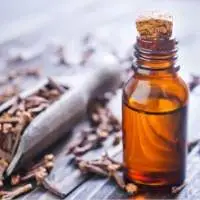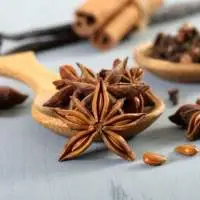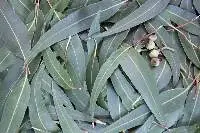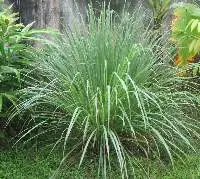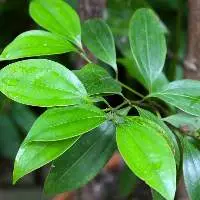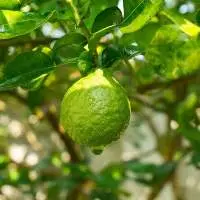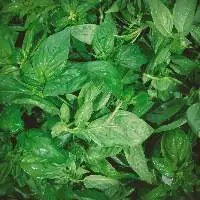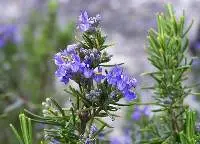

Angelica Root Essential Oil: Brief Introduction Angelica Root Oil, with its excellent strengthening, restorative, and anchoring properties, is highly acclaimed for its therapeutic and medicinal benefits when supplied in an airtight bottle. Aromas Oils is a leading supplier of angelica root oil globally, serving the US, Canada, the UK, and other countries. Botany Angelica archangelica, belonging to the Apiaceae family, grows in mildly acidic soil. The plant features a large, hollow stem with white flowers. Angelica takes several years to flower, and patience is required until it is fully grown. Once flowering is complete, the roots are harvested, and oils are extracted. While there are 37 known species of Angelica, Angelica archangelica is widely used for aromatherapy. Angelica Root Oil: Introduction Obtained from the Angelica archangelica plants growing in damp soil in various European countries, natural essential oils are extracted from Angelicaâ??s roots through steam distillation after flowering. Uses of Angelica Essential Oil In demand in Eastern and Western traditional practices. Important herb for treating lung-related issues and a preventive measure during epidemics in the Middle Ages in Europe. Used in Chinese medicine formulations to cure digestive and respiratory issues. Adds flavor to alcoholic drinks like Benedictine and Chartreuse. Used for diffusion and inhalation for respiratory issues. Angelica root oil wholesale suppliers provide the oil globally at competitive rates. Benefits of Angelica Root Oil Possesses expectorant, antispasmodic, digestive, and relaxant properties. Detoxifies the body from harmful toxins. Provides relief from stress and anxiety. Blends Well With Cedarwood, Frankincense, Clary sage, Bergamot, Myrrh, Sandalwood. Angelica Root Essential Oil bulk suppliers also offer these oils wholesale at favorable rates for blending. Available Product Variants Angelica Hydrosols and Angelica Extract Organic Oil General Precautionary Measures As angelica root oil manufacturers, we suggest the following precautionary measures: Not recommended for use after 24 hours of sun exposure as it is Phototoxic. Avoid use if suffering from diabetes; pregnant women, children, and nursing mothers should consult with their healthcare provider before use. For external use only; internal use should be avoided without consulting a doctor. Direct application on the skin is not advisable; dilute with a suitable carrier oil before application. Storage Instructions Transfer the essential oil content from aluminum containers received from Angelica root essential oil wholesale manufacturers to amber dark glass bottles. Store them in cool, dark places away from sunlight and heat to preserve their essence until expiration. Locations Covered As an Angelica root oil supplier, the enterprise delivers products to any location worldwide, including the UK, US, Canada, Australia, New Zealand, South Korea, China,

Volume 100 ml, 250 ml, 500 ml, 1 Ltr, 5 Ltr, 10 Ltr, 25 Ltr One-Stop Customization - Designing the shape, color, material, and labeling of the bottle to match the brand's style and image.The label on the bottle can be customized to include the brandâ??s logo, product information, and any other necessary information. Packaging can also be customized to match the brand's style and image. The Trusted Brand in Quality-Approved Essential Oil Packaging Solutions Experience a sourcing experience like no other with a globally-trusted essential oil packaging manufacturer, Jarsking. We offer a vast selection of essential oil packaging solutions made with the finest materials and specifically designed to preserve the efficacy of your essential oil formulations. Jarsking's ISO-certified production facility practices a streamlined manufacturing process and strict quality control protocols to ensure you get the right essential oil packaging in the market. Plus, you can customize the design of your packaging and add your logo to make them more appealing to your growing audience. Quick Benefits: Make bespoke essential oil packaging that reflects your branding Work within your budget for better profits Bring your existing designs to retain your loyal customers Improve efficacy and application suggestions of your essential oils
Cinnamon Spice Oil is obtained from the twigs and leaves of the plant by the process of steam distillation. This tropical evergreen tree grows up to a height of around 15 meter and it has strong and sturdy branches with and has thick bark. The tree bears leathery, shiny leaves and has oval shaped blue colored berries and small sized flowers. This oil is organic certified and is organically cultivated in India.
Cinnamon Bark Spice Oil is obtained from the bark of the Cinnamon Bark using the process of steam distillations. This ever green is a native of Vietnam and China and it bears leather, shiny and green leaves. And, it has white, small and oval shaped berries of purple color. We provide to our customers.
Cassia spice oil is extracted from the barks, twigs, stalks, and leaves of the plant by the method of stem distillation of the Cinnamon Cassia tree. It is also known as Cassia lignea and false cinnamon. The tree belongs to the family of Lauracea! Cinnamomum cassia is brown to yellow in color and has water like viscosity.
Caraway Spice Oil is extracted from biennial plant called Carum carvi. This oil is also known as Kalonji essential oil. The plant is native to North America, Asia and Europe and it belongs to the family of Umbelliferae. It is similar to carrot plant and they bear pink and white colored umbels. The oil is obtained through the process of stem distillation from its dried seeds. The oil is pale yellow to colorless and has fresh caraway odor.
Black Pepper Spice Oil is extracted from the red fruit of the Peppercorn by the essential process of steam distillation from the Piper nigrum Linn herbaceous plant of the Piperaceae family. The oil has thin and consistent likes that of water. The black pepper vine has a heart-like shape and has a sharp and pleasant fragrance. Black Pepper has a woody and dry undertone, and its major constituents are Ã??- pinene, caryophyllene, and phellandrene.
Black Cumin Seed Oil is extracted by the process of cold pressed method from the annual herbaceous plant. This plant belongs to the family of Ranunculaceae (buttercup) and the fruits of the plant are used to obtain the oil. It is believed to be made of a variety of nutrients including carbohydrates, fats and protein. WE make sure to process, cleanse and pack the oil in an eco-friendly way.
Aniseeds are the products of the Anise plant and after its stem distillation the oil is obtained. Anise plant is actually an herb that grows annually. We actively provide our customers with various types of high quality Aniseed oil. Our trained executives work all through making use of advanced technologies to process and obtained the oil in the best possible condition. And, also we make sure to pack it with all the precision in airtight bottles.
The Blue Mallee, or Blue-Leaved Mallee, is a deeply rooted perennial tree in the Mallee regions of Victoria and NSW. The bark is smooth and fibrous near the trunk base. Leaves are disjunct and linear to narrow-lanceolate. Juvenile leaves are glaucous and adult leaves gray-green. Eucalyptus leaves are the favourite food of Koalas, and have been used as traditional medicine by the aboriginal peoples of Australia. Having the highest cineol and eucalyptol among the Eucalyptus, it continues to be used as a highly popular Essential Oil throughout the world today.
Explore the boundless potential of Citronella Organic Essential Oil, meticulously sourced from the resilient grass native to the lush landscapes of Sri Lanka and Java. Standing at approximately 1 meter (3 feet) in height, this aromatic perennial encapsulates a vibrant history of delivering refreshing scents, natural bug-repelling qualities, and skin-enhancing properties to your diverse applications.
Cinnamomum zeylanicum originates from Sri Lanka. It is a tropical evergreen tree of the laurel family growing up to 15 m (45 feet) in the wild. The tree has a very thin smooth bark, with a light yellowish brown color and a highly fragrant odor. Its pleasant scent has lead it to be a perfect addition to creams, lotions and soaps.
Cinnamomum zeylanicum originates from Sri Lanka. It is a tropical evergreen tree of the laurel family growing up to 15 m (45 feet) in the wild. The tree has a very thin smooth bark, with a light yellowish brown color and a highly fragrant odor. Its pleasant scent has lead it to be a perfect addition to creams, lotions and soaps.
Cedarwood is a pyramidshaped majestic evergreen tree which grows up to 131 ft high The wood itself is hard and strongly aromatic because of the essential oil it contains which is obtained by steam distillation Originating in the Atlas Mountains in North Africa linen chests were frequently crafted from Cedar The ancient Egyptians prized the oil mostly for embalming purposes but also for cosmetics and perfumery and Solomons Temple was built with Cedar Wood Today closet liners and accessories are frequently crafted from Cedar and the oil is currently used in commercial soaps cosmetics and perfumes especially mens colognes
The Bergamot tree can grow up to four meters high, with star-shaped flowers, and smooth leaves, bearing citrus fruit resembling a cross between an orange and a grapefruit but in a pear-shape. The fruit ripens from green to yellow. The name Bergamot is derived from the city Bergamo in Lombardy where the oil was first sold.
In Greek its name means royal remedy or king In the 16th century powdered basil was used to treat migraines and chest infections The ancient Egyptians believed that it would open the gates of heaven to a dying person and the Hindus use Basil sprigs to protect the dead from evil while in transition between lives Western European lore sometimes claimed that it was a symbol of evil while the Eastern Orthodox Church used it in the making of holy water
An evergreen shrub with elegant branches Rosemarys stem is ashcolored and scaly with leathery thick leaves that are lustrous and dark green with white underneath Its tiny pale blue blossoms abound from December through spring and it can grow to heights of close to two meters in height Its name originates from the Latin ros marinus Dew of the Sea as Rosemary naturally thrives near the Mediterranean Sea
